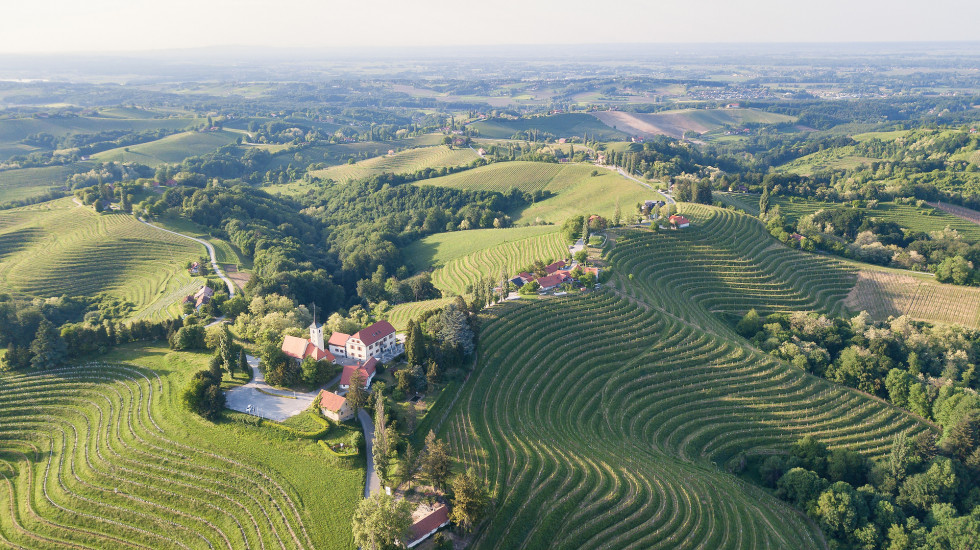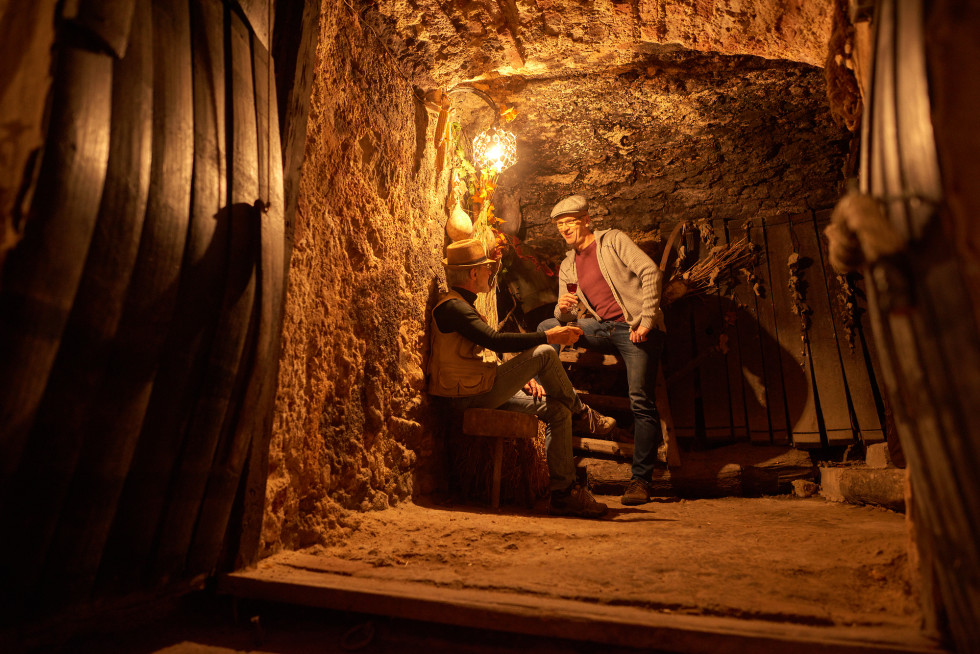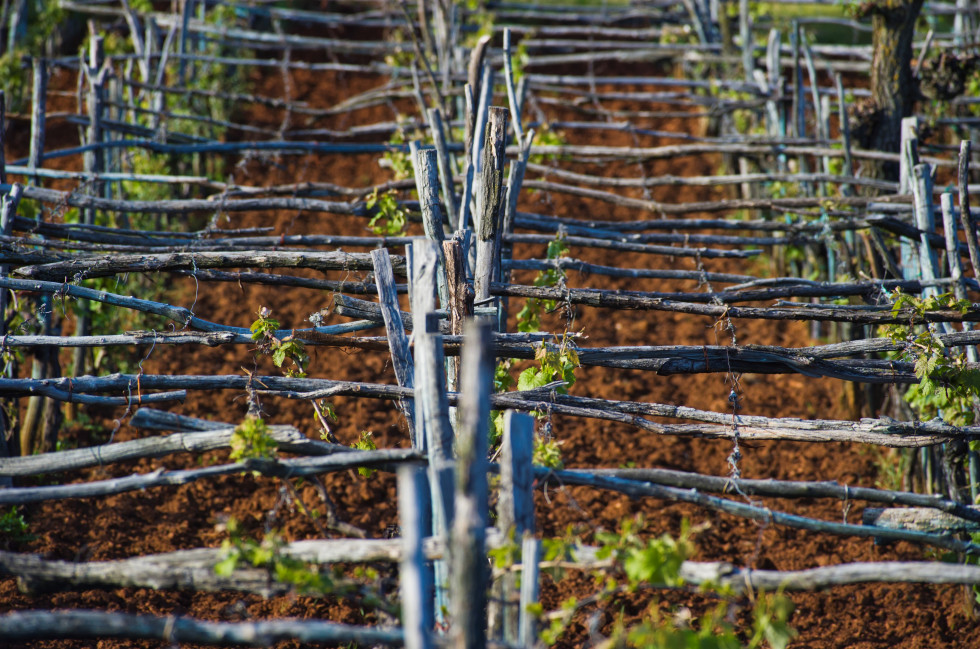Slovenian wines
Slovenian wine is produced in nine winegrowing districts, which are part of three winegrowing regions – the Podravje, Posavje and Primorska winegrowing regions.
The Podravje winegrowing region
The Podravje winegrowing region lies in the northeast of the country and consists of two winegrowing districts. The small and somewhat warmer Prekmurje wine district, stretching across 440 hectares of land, is most distinguished by Blaufränkisch wines and aromatic white varieties.
The central part of the Podravje region is the Štajerska Slovenija winegrowing district. This is the largest winegrowing district in Slovenia, comprising 5,400 hectares of land. The cool Pohorje Hills to the west and the touch of the warm Pannonian Plain to the east produce a moderately cool climate. The mix of sandy clay soil, at times also marl and limestone soil, offers great conditions for the indigenous Furmint and wines from aromatic white varieties growing on steep hillsides frequently made into terraces.
The best-known varieties are Sauvignon blanc, Rheinriesling, Pinot gris, Gelber Muskateller, Traminer and Chardonnay, thriving in the surroundings of the well-known villages and towns of Ljutomer, Jeruzalem, Ormož, Svečina, Slovenska Bistrica and Slovenske Konjice.
The Štajerska Slovenija district is also known for its sparkling wines. Gornja Radgona boasts over 150 years of sparkling wine production.
The Posavje winegrowing region
The Posavje winegrowing region is the smallest in Slovenia. It lies in the southeast and boasts the highest production of the Blaufränkisch variety in Slovenia. It consists of three rather diverse winegrowing districts.
The limestone-covered and relatively warm areas of Bela Krajina (300 hectares) on the southern side of the Gorjanci Hills are the smallest Slovenian winegrowing district. The considerable temperature difference between days and nights supports the production of aromatic wines that preserve their freshness. Bela Krajina is known for the production of the Blaufränkisch and the Gelber Muskateller varieties.
The Dolenjska winegrowing district on the right bank of the River Sava (1,350 hectares) prides itself on its traditional light reddish wine with a geographical indication, which is called Cviček. The district’s specialty are predicate wines, which are among the best in the world in terms of quality.
The Bizeljsko-Sremič winegrowing district (700 hectares) enjoys a continental climate with Pannonian influences and a diverse soil. While red and white Bizeljčan are the most common wines, the Blaufränkisch has become more and more recognised. A special feature of this district are so-called turnip caves (repnice), which are cellars hand-dug into sand.
The younger generation of winemakers are coming to understand that Slovenia’s coldest winegrowing districts, Bizeljsko-Sremič and Dolenjska, offer outstanding conditions for sparkling wines made from the indigenous Kölner Blauer and Rumeni plavec and Chardonnay and Pinot noir.
The Primorska winegrowing region
Primorska, the warmest winegrowing region in Slovenia, lies in the southwest of the country. All four of its winegrowing districts enjoy the influences of the warm Adriatic Sea to various degrees.
Teran, a wine of a deep purple colour, is the pride of the Kras winegrowing district (560 hectares). It is produced from the red variety of Refosco thriving in the red limestone karst soil (terra rossa) rich with iron.
The narrow and long Vipavska dolina with its flysch soil enjoys cool Alpine air descending from the north and warm winds arriving from the Gulf of Trieste. Spicy Zelen and rich Pinella are indigenous to this wine-growing district, stretching across 2,100 hectares. While Merlot is the most widespread variety, white blends made from Malvasia, Ribolla Gialla, Zelen and Pinella reveal the most authentic and unique character of Vipavska dolina.
Cool afternoon winds from the Alps and warm ones from the Gulf of Trieste, along with flysch soil, contribute to the distinctive conditions of the Goriška Brda winegrowing district (1,800 hectares). White blends based on Chardonnay and Ribolla Gialla and red blends based on Merlot and both Cabernets provide some of the most renowned wines in the country. Ribolla Gialla, which takes up over a quarter of all vineyards, showcases some wines of tremendous varietal character.
Slovenska Istra (1,850 hectares) with its mostly flysch soil is the warmest among Slovenia’s winegrowing districts. And the vineyards enjoy fine view of the sea! Refosco and Malvasia are the king and queen of Slovenska Istra.
Slovenian winegrowing and winemaking in numbers
In Slovenia, we produce between 800,000 and 900,000 hectolitres of wine per year. White varieties prevail among the 60 varieties of grapevine grown in Slovenia. Each winegrowing district has at least one large wine cellar buying in grapes and there are over 2,500 registered wine producers bottling their own wine.
There are approximately 17,500 hectares of cultivated vineyards in Slovenia and almost 14,900 hectares of these are included in the register for the marketing of grapes and wine. As many as 28,000 agricultural holdings cultivate vineyards. In 2021, 862 hectares of vineyards were under organic production.
Vineyards lie on steep slopes. This adds to the enormous cost of production, while enabling high-quality grape harvest. The share of quality wines with a geographic indication amounts to as much as 70 percent of all production. Wine consumption in Slovenia is decreasing and wine producers sell more and more of their wine in foreign markets.
The harvest of grapes and wine mostly depends on weather conditions, taking into account the relatively small changes in the surface area. After 1992, there were several years of abundant harvest (1993, 1997, 2000, 2002, 2007, 2015 and 2018). Wine cellars acquired great quantities of wine and wine stocks were replenished, which lead to lower prices of grapes and wine.
While the harvest in 2021 was lower than the average due to spring frost and other unfavourable weather conditions, the grapes were generally of excellent quality. In Slovenia, we produced a total of 467,000 hectolitres of wine in 2021. The Ministry of Agriculture estimates that an additional 20 percent of wine was produced by small producers for their own consumption or for consumption by their family members.




